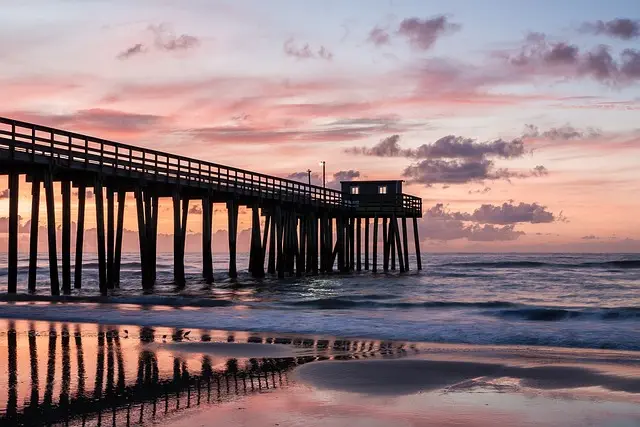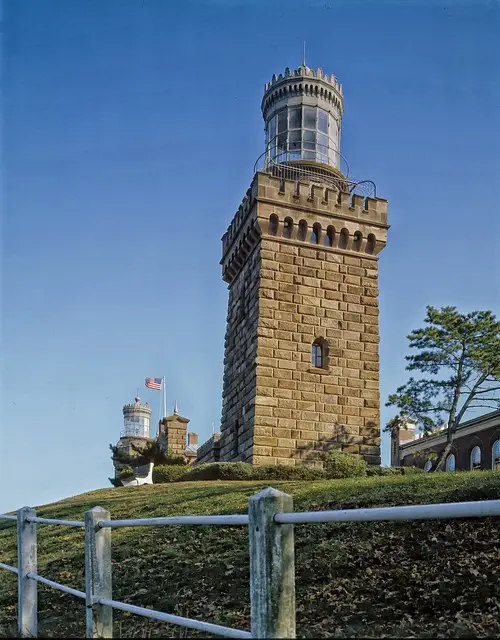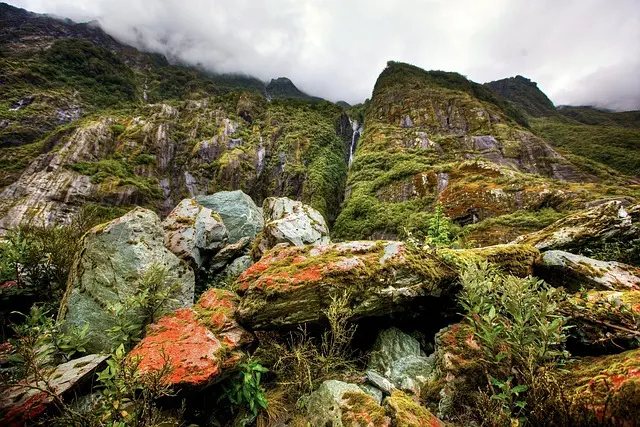The Paterson Great Falls National Historical Park in New Jersey is a multifaceted site that combines rich American industrial history with stunning natural landscapes. Covering approximately 780 acres, it features the impressive Great Falls, one of the largest east of the Mississippi River, which have historically powered industries and shaped the region's economic development, particularly during the Industrial Revolution. The park offers educational exhibits at its visitor center, providing insights into New Jersey's influential role in the nation's industrial past. It also preserves a variety of natural habitats that support diverse plant and animal species, making it a haven for both history enthusiasts and nature lovers. The park's events throughout the year, including guided tours, workshops, and festivals, offer opportunities to engage with New Jersey's cultural heritage and environmental significance. Ongoing preservation efforts focus on maintaining the integrity of both the natural falls and the surrounding area's historical context, ensuring that this New Jersey landmark remains a captivating destination for understanding the state's legacy and natural grandeur. Future plans aim to enhance visitor experiences and expand conservation efforts to protect the park's biodiversity and architectural heritage.
Embark on a journey to New Jersey’s Paterson Great Falls National Historical Park, a site where nature and history converge. This article takes you through the park’s breathtaking landscapes, significant geological formations, and rich historical tapestry. Discover the intricate ecosystems that thrive within its boundaries, learn about recreational opportunities for visitors of all ages, and delve into the educational programs fostering community involvement. Preservation efforts and future plans underscore a commitment to safeguarding this national treasure. Join us as we explore the Paterson Great Falls NHP’s offerings in the Garden State.
- Unveiling the Grandeur of New Jersey's Paterson Great Falls National Historical Park
- Geological Wonders: The Formation and Significance of the Great Falls
- A Journey Through Time: The Historical Backdrop of the Park
- Exploring the Park's Ecosystem and Biodiversity
- Recreational Activities and Seasonal Events at Paterson Great Falls NHP
- Educational Programs and Community Engagement Initiatives
- Preservation Efforts and Future Plans for the Paterson Great Falls NHP
Unveiling the Grandeur of New Jersey's Paterson Great Falls National Historical Park

Situated in the heart of New Jersey, the Paterson Great Falls National Historical Park stands as a testament to the Garden State’s rich history and industrial heritage. This expansive park, spanning over 780 acres, offers visitors a unique blend of natural beauty and historical significance. The iconic waterfall, one of the largest in the United States east of the Mississippi River, has shaped both the physical landscape and the economic development of the region, particularly during the Industrial Revolution. Today, it invites tourists and history enthusiasts to explore its well-preserved industrial sites, including the Paulinskill Valley Railway and the historic Lock 4. The park’s visitor center serves as an informative starting point, providing educational exhibits that delve into the area’s past and the pivotal role it played in American history. With its significant cultural and natural resources, New Jersey’s Paterson Great Falls National Historical Park is a must-visit destination for those seeking to uncover the layers of history embedded in America’s diverse tapestry. The park’s efforts to preserve and interpret this heritage make it an invaluable asset for understanding New Jersey’s pivotal role in shaping the nation’s industrial landscape.
Geological Wonders: The Formation and Significance of the Great Falls

Situated in the heart of New Jersey, the Paterson Great Falls National Historical Park is a natural wonder that captivates visitors with its powerful cascades and intricate geological formations. The Great Falls themselves are a prime example of how geology shapes both landscapes and history. Formed over 10,000 years by the gradual erosion of the Watchung Mountains to the west, the falls are where the Passaic River plunges over a series of steep, jagged drops, creating an impressive waterfall that has served as a vital source of energy and inspiration throughout history. The falls’ significance is not limited to their natural beauty; they have played a crucial role in the economic development of the region, powering early industries and shaping the cultural landscape of New Jersey. Today, these geological wonders stand as a testament to the area’s rich heritage, offering a glimpse into the past while inviting contemplation of nature’s enduring power. Visitors to the park can explore the falls’ surroundings, which include remnants of factories and mills that once harnessed the falls’ energy, providing a unique blend of natural splendor and historical significance.
A Journey Through Time: The Historical Backdrop of the Park

The Paterson Great Falls National Historical Park in New Jersey stands as a remarkable testament to America’s industrial past and natural beauty, woven together through its rich history and geological features. As visitors explore the park, they embark on a journey that transcends time, with each step evoking a different era of the region’s storied past. The falls themselves have been central to the area’s development since prehistoric times; indigenous peoples used these waterways for sustenance and trade long before European settlers arrived. Subsequently, during the late 18th century, Alexander Hamilton recognized the potential of the falls and played a pivotal role in the establishment of the Paterson Powder Works, laying the groundwork for Paterson to become known as “The Arsenal of America.” The park’s historical narrative continues through its well-preserved sites, including the Hamilton House Museum and the Waterways & Industrial Worksite, offering an immersive experience into New Jersey’s pivotal role in the industrial revolution. This living history provides a unique opportunity for visitors to engage with the tangible remnants of the region’s journey from a colonial outpost to a significant center of innovation and manufacturing. The park not only preserves this legacy but also invites all to appreciate the interplay between human ingenuity and natural splendor that defines New Jersey’s history.
Exploring the Park's Ecosystem and Biodiversity

Situated in the heart of New Jersey, the Paterson Great Falls National Historical Park is a unique confluence of natural beauty and historical significance. The park’s ecosystem is a mosaic of habitats that provide a refuge for a diverse array of flora and fauna. Visitors to the park can explore the varied landscapes, from the dense forest areas to the more open wetlands, each offering a glimpse into the region’s biodiversity. The Great Falls themselves are a focal point of the park’s ecosystem, influencing the surrounding environment through their microclimate and providing a vital water source for many species. The park is home to both native and migratory bird populations, with opportunities to observe raptors, waterfowl, and songbirds against the backdrop of the cascading falls. Additionally, the park’s trails weave through diverse environments, allowing naturalists and enthusiasts to witness firsthand the interplay between geology, hydrology, and ecological communities that define this New Jersey gem. The biodiversity found within the park is not only a testament to the region’s natural heritage but also an indicator of the health of New Jersey’s environment as a whole.
Recreational Activities and Seasonal Events at Paterson Great Falls NHP

Situated in New Jersey, the Paterson Great Falls National Historical Park offers a rich array of recreational activities and seasonal events that cater to diverse interests and provide opportunities for exploration and enjoyment throughout the year. Visitors can engage in hiking along the numerous trails that traverse varied terrains, offering breathtaking views of the falls and surrounding landscape. The park’s trails are designed for all skill levels, ensuring that everyone from casual walkers to experienced hikers can partake in the outdoor experience.
In addition to its natural beauty, the park hosts a variety of seasonal events that highlight both the historical and cultural significance of the area. These events include guided tours, educational programs, and festivals that celebrate local history, art, and heritage. During summer months, visitors can attend outdoor concerts and live performances set against the backdrop of the impressive falls. As fall approaches, the park’s annual harvest festival draws crowds with its autumnal activities and crafts. Winter brings holiday-themed events, while spring ushers in a series of nature-focused workshops and eco-tours. Each season in New Jersey’s Paterson Great Falls National Historical Park presents unique opportunities to immerse oneself in the park’s offerings and create lasting memories.
Educational Programs and Community Engagement Initiatives

The Paterson Great Falls National Historical Park in New Jersey offers a rich array of educational programs designed to engage visitors of all ages with the park’s significant history and natural beauty. These programs provide immersive learning experiences that highlight the cultural and industrial heritage of the area, including the story of Alexander Hamilton’s contributions as a founder of the first successful society for aid to needy and dependent individuals. The park’s commitment to education is evident in its workshops, guided tours, and seasonal events, all of which aim to foster a deeper understanding and appreciation of the site’s historical significance and environmental aspects.
In addition to educational programs, the park actively engages with the local community through various initiatives that foster stewardship and provide opportunities for active participation. These include volunteer days, where residents can contribute to the preservation and maintenance of the park, as well as outreach programs that bring the park’s resources into classrooms and community centers across New Jersey. The park collaborates with local organizations and educational institutions to ensure that these initiatives meet the needs of the community and offer accessible ways for residents to connect with their cultural landscape. Through these efforts, the Paterson Great Falls National Historical Park not only preserves its past but also builds a strong bond with the people it serves.
Preservation Efforts and Future Plans for the Paterson Great Falls NHP

The Paterson Great Falls National Historical Park in New Jersey stands as a significant testament to America’s industrial heritage and innovation. Preservation efforts for this site have been ongoing, with a focus on safeguarding both the natural features of the falls and the rich historical tapestry that surrounds them. These initiatives encompass structural stabilization, environmental conservation, and educational programming aimed at promoting awareness and stewardship of the park’s resources. The collaboration between federal, state, and local entities has been pivotal in these efforts, ensuring that the falls remain a vibrant component of New Jersey’s cultural landscape.
Looking ahead, future plans for the Paterson Great Falls NHP are ambitious and far-reaching. Strategies include enhancing visitor facilities to improve accessibility and interpretation, thereby enriching the educational experience for both locals and tourists. Additionally, there is a commitment to expanding the park’s conservation measures, which will help protect the area’s biodiversity and preserve the historical structures within the park boundaries. These initiatives underscore New Jersey’s dedication to maintaining its cultural heritage and natural beauty for generations to come, ensuring that the Paterson Great Falls National Historical Park continues to be a site of both historical significance and environmental importance.
